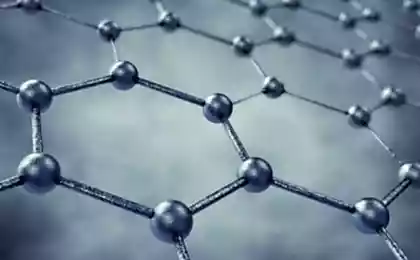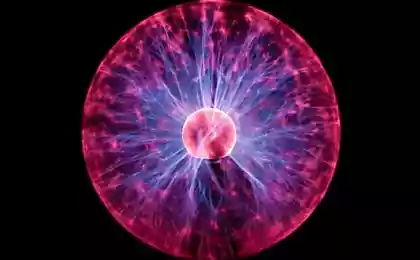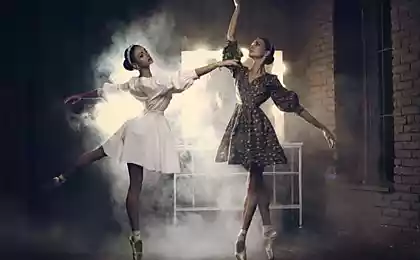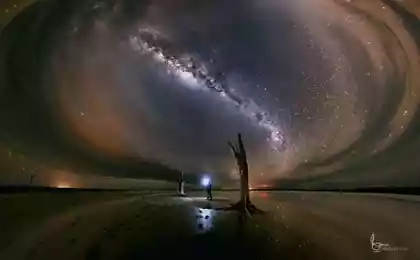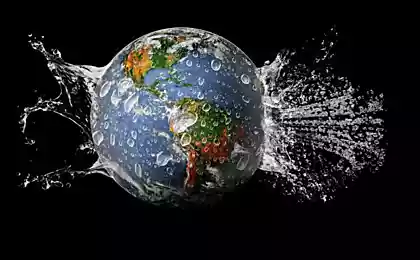1129
Incredible testimony of the evolution of life on Earth
The emergence of the natural diversity of the world mankind owes billions of years of the revolution. Modern geologists and paleontologists have discovered the crucial moments in the development of life on our planet.

1. The most ancient people - Omo

Now people can trace their ancestry back hundreds of thousands of years. Two skulls, called Omo Omo 1 and 2, which were discovered in Ethiopia in 1967, celebrated its 195,000 years old, making them the earliest of the detected still anatomically modern humans. Now scientists think Homo Sapiens began to evolve 200,000 years ago.
However, on this issue is still being debated, as evidence of cultural development - Point of musical instruments, needles and accessories - all date back 50,000 years. Complex composite tools such as harpoons, also appeared around this time. Therefore, one can not answer a simple question: If modern humans appeared 200,000 years ago, why they took as many as 150 000 years to develop anything resembling culture.
2. The oldest bird - protoavis

Today, everyone knows that birds evolved from dinosaurs, and that many dinosaurs were actually covered with feathers. As a result, the question "what bird is the oldest" in fact need to be reformulated in "from when dinosaurs can start counting birds».
For a long time, paleontologists thought the most ancient bird Archaeopteryx, but today there was even a candidate for the ancient title of the first bird. Protoavis lived about 220 million years ago, before the 80 million years of any rival. The fossil was found in Texas paleontologist Sankar Chatterjee, who argues that protoavis actually closer to modern birds than Archaeopteryx.
3. The first kinds of creatures who began walking on the ground - and Tiktaalik pnevmodesmus

Tiktaalik - platypus creatures living in the Devonian period, was something of a cross between a fish, frogs and alligators. It is believed that it first chose to land from the water 375 million years ago. Discovered in Canada in 2004, this species is considered an important transitional link between aquatic vertebrates and the first land animals. Tiktaalik also boasts ribs which are able to maintain his body out of the water, light, mobile neck and eyes on the top of the head like a crocodile. Centipede pnevmodesmus lived about 428 million years ago. Being the size of a 1 centimeter in fact was the first creature who constantly live on land and breathe air.
4. The oldest reptile - Gilon

Reptiles were the first vertebrates that could live on earth. Yascheritsepodobnoe being Gilon, the length of which is only 20 centimeters, as scientists believe, it was the oldest reptile. Gilonomy who apparently were insectivores, there were about 310 million years ago. Preserved fossils of the creatures were discovered in 1860 inside a tree trunk in Nova Scotia.
5. The oldest being the ability to fly - riniognata

Flight as the main means of transport requires a complex structure of the body (low body weight, but strong skeleton), and the powerful muscles of the wings. The first creature that was capable of flying is actually the oldest known insect. Rhyniognatha hirsti - a tiny insect that lived about 400 million years ago. The first evidence of the existence of this insect were discovered in 1928 in the Devonian rocks.
6. The first flowering plant - potomakapnos and amborella

People tend to associate the plant with flowers, but in fact the flowers are relatively recent. Before there were flowers, plants bred using a dispute over hundreds of millions of years. In fact, scientists do not know why any of flowers, as they are very delicate and intricate and require a huge amount of energy, which theoretically could find a much more rational use.
These strange circumstances forced Darwin to describe the growth of flowers, as a "terrible secret". The oldest known fossil flowering plants belong to the Cretaceous period, between 115 and 125 million years ago. One of the oldest flowers are potomakapnos, which surprisingly resembles a modern poppy and amborella, which was found on the island of New Caledonia. All indications are that the flowers did not develop slowly, and suddenly arose in fact in its present form.
7. The most ancient mammals - hadrokodium

The oldest known mammal like a small mouse or modern shrew. Length hadrokodiuma, whose remains found in China in 2001 was about 3, 5 centimeters, and weighing only 2 grams of animal. Rather, he was a way of life, similar to the modern shrew because his teeth are special teeth for crushing insects. Hadrokodium lived about 195 million years, long before some of the best-known dinosaurs, including Stegosaurus, Diplodocus, and Tyrannosaurus.
8. The first tree - vattieza

Trees have played (and still play) a crucial role in the formation of the Earth's atmosphere. Without them, the carbon dioxide is not converted to oxygen in, and soon the planet would become lifeless. The first forests have dramatically changed the ecosystem of the Earth, thus the appearance of the trees can be considered one of the most important evolutionary breakthroughs in history.
Currently, the oldest known tree is a kind of 397 million years of age, who was named vattieza. The leaves of this plant resembled a palm ferns, and the tree itself reaches a height of 10 meters. Vattieza emerged 140 million before the dinosaurs. The plant spreads by spores like modern ferns and fungi.
9. The oldest dinosaur - nyasazavr
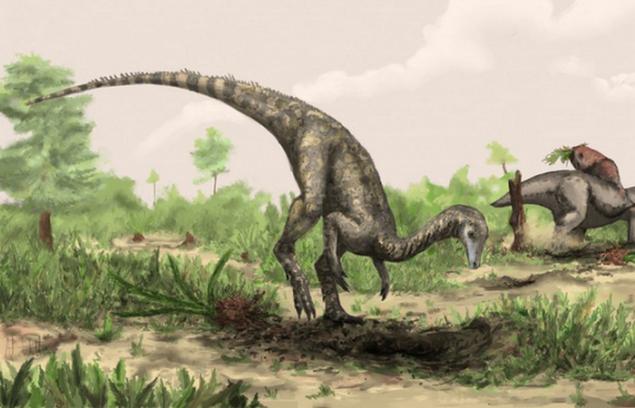
Dinosaurs began to reign in the world after the Permian-Triassic extinction event, which occurred some 250 million years ago and destroyed about 90 percent of all species on the planet, including 95 percent of marine life, and most of the trees of the planet. After that, there were dinosaurs in the Triassic.
The oldest currently known dinosaur is nyasazavr, whose bones were discovered in Tanzania in 1930. Until now, scientists did not have a clue he was a predator or a herbivore, and he walked on two legs or four. Nyasazavra growth was only 1 meter, weight - 18-60 kg.
10. The oldest form of life

What is the oldest form of life known to science? Quite a complex issue, often because resources are so ancient that their age is difficult to pinpoint. For example, on rocks found near the Pilbara region in Australia, contained germs age of almost 3, 5 billion years. However, some scientists believe that such organic-Precambrian microfossils are really strange form of minerals encountered in specific hydrothermal conditions. In other words, they are not alive.

1. The most ancient people - Omo

Now people can trace their ancestry back hundreds of thousands of years. Two skulls, called Omo Omo 1 and 2, which were discovered in Ethiopia in 1967, celebrated its 195,000 years old, making them the earliest of the detected still anatomically modern humans. Now scientists think Homo Sapiens began to evolve 200,000 years ago.
However, on this issue is still being debated, as evidence of cultural development - Point of musical instruments, needles and accessories - all date back 50,000 years. Complex composite tools such as harpoons, also appeared around this time. Therefore, one can not answer a simple question: If modern humans appeared 200,000 years ago, why they took as many as 150 000 years to develop anything resembling culture.
2. The oldest bird - protoavis

Today, everyone knows that birds evolved from dinosaurs, and that many dinosaurs were actually covered with feathers. As a result, the question "what bird is the oldest" in fact need to be reformulated in "from when dinosaurs can start counting birds».
For a long time, paleontologists thought the most ancient bird Archaeopteryx, but today there was even a candidate for the ancient title of the first bird. Protoavis lived about 220 million years ago, before the 80 million years of any rival. The fossil was found in Texas paleontologist Sankar Chatterjee, who argues that protoavis actually closer to modern birds than Archaeopteryx.
3. The first kinds of creatures who began walking on the ground - and Tiktaalik pnevmodesmus

Tiktaalik - platypus creatures living in the Devonian period, was something of a cross between a fish, frogs and alligators. It is believed that it first chose to land from the water 375 million years ago. Discovered in Canada in 2004, this species is considered an important transitional link between aquatic vertebrates and the first land animals. Tiktaalik also boasts ribs which are able to maintain his body out of the water, light, mobile neck and eyes on the top of the head like a crocodile. Centipede pnevmodesmus lived about 428 million years ago. Being the size of a 1 centimeter in fact was the first creature who constantly live on land and breathe air.
4. The oldest reptile - Gilon

Reptiles were the first vertebrates that could live on earth. Yascheritsepodobnoe being Gilon, the length of which is only 20 centimeters, as scientists believe, it was the oldest reptile. Gilonomy who apparently were insectivores, there were about 310 million years ago. Preserved fossils of the creatures were discovered in 1860 inside a tree trunk in Nova Scotia.
5. The oldest being the ability to fly - riniognata

Flight as the main means of transport requires a complex structure of the body (low body weight, but strong skeleton), and the powerful muscles of the wings. The first creature that was capable of flying is actually the oldest known insect. Rhyniognatha hirsti - a tiny insect that lived about 400 million years ago. The first evidence of the existence of this insect were discovered in 1928 in the Devonian rocks.
6. The first flowering plant - potomakapnos and amborella

People tend to associate the plant with flowers, but in fact the flowers are relatively recent. Before there were flowers, plants bred using a dispute over hundreds of millions of years. In fact, scientists do not know why any of flowers, as they are very delicate and intricate and require a huge amount of energy, which theoretically could find a much more rational use.
These strange circumstances forced Darwin to describe the growth of flowers, as a "terrible secret". The oldest known fossil flowering plants belong to the Cretaceous period, between 115 and 125 million years ago. One of the oldest flowers are potomakapnos, which surprisingly resembles a modern poppy and amborella, which was found on the island of New Caledonia. All indications are that the flowers did not develop slowly, and suddenly arose in fact in its present form.
7. The most ancient mammals - hadrokodium

The oldest known mammal like a small mouse or modern shrew. Length hadrokodiuma, whose remains found in China in 2001 was about 3, 5 centimeters, and weighing only 2 grams of animal. Rather, he was a way of life, similar to the modern shrew because his teeth are special teeth for crushing insects. Hadrokodium lived about 195 million years, long before some of the best-known dinosaurs, including Stegosaurus, Diplodocus, and Tyrannosaurus.
8. The first tree - vattieza

Trees have played (and still play) a crucial role in the formation of the Earth's atmosphere. Without them, the carbon dioxide is not converted to oxygen in, and soon the planet would become lifeless. The first forests have dramatically changed the ecosystem of the Earth, thus the appearance of the trees can be considered one of the most important evolutionary breakthroughs in history.
Currently, the oldest known tree is a kind of 397 million years of age, who was named vattieza. The leaves of this plant resembled a palm ferns, and the tree itself reaches a height of 10 meters. Vattieza emerged 140 million before the dinosaurs. The plant spreads by spores like modern ferns and fungi.
9. The oldest dinosaur - nyasazavr

Dinosaurs began to reign in the world after the Permian-Triassic extinction event, which occurred some 250 million years ago and destroyed about 90 percent of all species on the planet, including 95 percent of marine life, and most of the trees of the planet. After that, there were dinosaurs in the Triassic.
The oldest currently known dinosaur is nyasazavr, whose bones were discovered in Tanzania in 1930. Until now, scientists did not have a clue he was a predator or a herbivore, and he walked on two legs or four. Nyasazavra growth was only 1 meter, weight - 18-60 kg.
10. The oldest form of life

What is the oldest form of life known to science? Quite a complex issue, often because resources are so ancient that their age is difficult to pinpoint. For example, on rocks found near the Pilbara region in Australia, contained germs age of almost 3, 5 billion years. However, some scientists believe that such organic-Precambrian microfossils are really strange form of minerals encountered in specific hydrothermal conditions. In other words, they are not alive.
